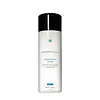What's inside
What's inside
 Key Ingredients
Key Ingredients

 Benefits
Benefits

 Concerns
Concerns

 Ingredients Side-by-side
Ingredients Side-by-side

Salicylic Acid 0.5%
MaskingWater
Skin ConditioningButylene Glycol
HumectantBetaine
HumectantGlycereth-26
HumectantZinc PCA
HumectantPotassium Ascorbyl Tocopheryl Phosphate
AntioxidantDipotassium Glycyrrhizate
HumectantMethyl Gluceth-20
HumectantGlycerin
HumectantPPG-5-Ceteth-20
EmulsifyingPhenoxyethanol
PreservativePhenethyl Alcohol
MaskingChlorphenesin
AntimicrobialMethylparaben
PreservativeBenzoic Acid
MaskingWater
Skin ConditioningAloe Barbadensis Extract
Skin ConditioningVaccinium Myrtillus Bud Extract
AntioxidantHamamelis Virginiana Extract
AntiseborrhoeicPhenoxyethanol
PreservativeIsoceteth-20
EmulsifyingSaccharum Officinarum Extract
MoisturisingPropylene Glycol
HumectantMethylparaben
PreservativePvp
Emulsion StabilisingChlorphenesin
AntimicrobialCitrus Aurantium Dulcis Fruit Extract
MaskingCitrus Medica Limonum Peel Extract
EmollientGlycerin
HumectantBenzoic Acid
MaskingAcer Saccharum Extract
Skin ConditioningChamomilla Recutita Flower Extract
MaskingRosmarinus Officinalis Extract
AntimicrobialThymus Vulgaris Extract
PerfumingCitrus Aurantium Dulcis Oil
MaskingWater, Aloe Barbadensis Extract, Vaccinium Myrtillus Bud Extract, Hamamelis Virginiana Extract, Phenoxyethanol, Isoceteth-20, Saccharum Officinarum Extract, Propylene Glycol, Methylparaben, Pvp, Chlorphenesin, Citrus Aurantium Dulcis Fruit Extract, Citrus Medica Limonum Peel Extract, Glycerin, Benzoic Acid, Acer Saccharum Extract, Chamomilla Recutita Flower Extract, Rosmarinus Officinalis Extract, Thymus Vulgaris Extract, Citrus Aurantium Dulcis Oil
Ingredients Explained
These ingredients are found in both products.
Ingredients higher up in an ingredient list are typically present in a larger amount.
Benzoic Acid is used to preserve and adjust the pH of products.
The antimicrobial property of Benzoic Acid helps elongate a product's shelf life. Its main role is to reduce fungi growth and is not found to be effective at fighting bacteria. Therefore Benzoic Acid is always added along with other preservatives.
In its pure form, Benzoic Acid looks like a white crystalline solid. It has slight solubility in water.
The name of Benzoic Acid comes from gum benzoin, which used to be the sole source of deriving this ingredient. Benzoic Acid is the most simple aromatic carboxylic acid.
Benzoic Acid is naturally occuring in strawberries, mustard, cinnamon, and cloves. It has a slight scent but is not considered to be a fragrance.
Learn more about Benzoic AcidChlorphenesin is a synthetic preservative. It helps protect a product against bacteria in order to extend shelf life. In most cases, Chlorphenesin is paired with other preservatives such as phenoxyethanol and caprylyl glycol.
Chlorphenesin is a biocide. This means it is able to help fight the microorganisms on our skin. It is also able to fight odor-releasing bacteria.
Chlorphenesin is soluble in both water and glycerin.
Studies show Chlorphenesin is easily absorbed by our skin. You should speak with a skincare professional if you have concerns about using Chlorphenesin.
Learn more about ChlorphenesinGlycerin is already naturally found in your skin. It helps moisturize and protect your skin.
A study from 2016 found glycerin to be more effective as a humectant than AHAs and hyaluronic acid.
As a humectant, it helps the skin stay hydrated by pulling moisture to your skin. The low molecular weight of glycerin allows it to pull moisture into the deeper layers of your skin.
Hydrated skin improves your skin barrier; Your skin barrier helps protect against irritants and bacteria.
Glycerin has also been found to have antimicrobial and antiviral properties. Due to these properties, glycerin is often used in wound and burn treatments.
In cosmetics, glycerin is usually derived from plants such as soybean or palm. However, it can also be sourced from animals, such as tallow or animal fat.
This ingredient is organic, colorless, odorless, and non-toxic.
Glycerin is the name for this ingredient in American English. British English uses Glycerol/Glycerine.
Learn more about GlycerinMethylparaben is a preservative and is a paraben. It is used to prevent the growth of fungus, mold, and other harmful bacteria. Parabens are chemicals used as preservatives in both cosmetics and food.
Methylparaben can be synthetically created. It can also be found naturally in some fruits, such as blueberries.
Oftentimes, Methylparaben is combined with other parabens to help increase the shelf life.
The safety of Methylparaben is currently being studied. While ongoing studies are looking into the safety of parabens, the results have been very mixed. Some studies have not found Methylparaben to be harmful.
Learn more about MethylparabenPhenoxyethanol is a preservative that has germicide, antimicrobial, and aromatic properties. Studies show that phenoxyethanol can prevent microbial growth. By itself, it has a scent that is similar to that of a rose.
It's often used in formulations along with Caprylyl Glycol to preserve the shelf life of products.
Water. It's the most common cosmetic ingredient of all. You'll usually see it at the top of ingredient lists, meaning that it makes up the largest part of the product.
So why is it so popular? Water most often acts as a solvent - this means that it helps dissolve other ingredients into the formulation.
You'll also recognize water as that liquid we all need to stay alive. If you see this, drink a glass of water. Stay hydrated!
Learn more about Water